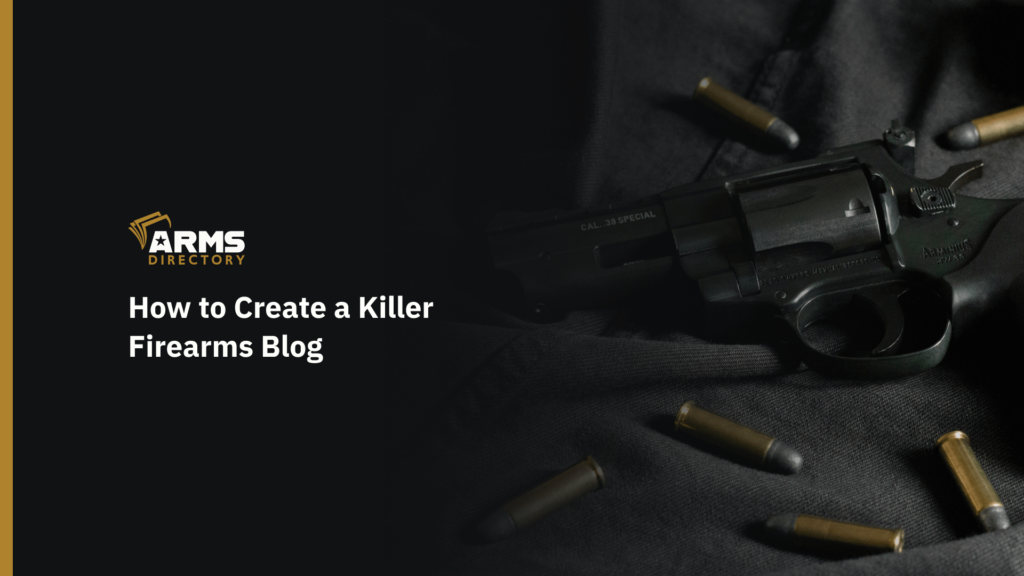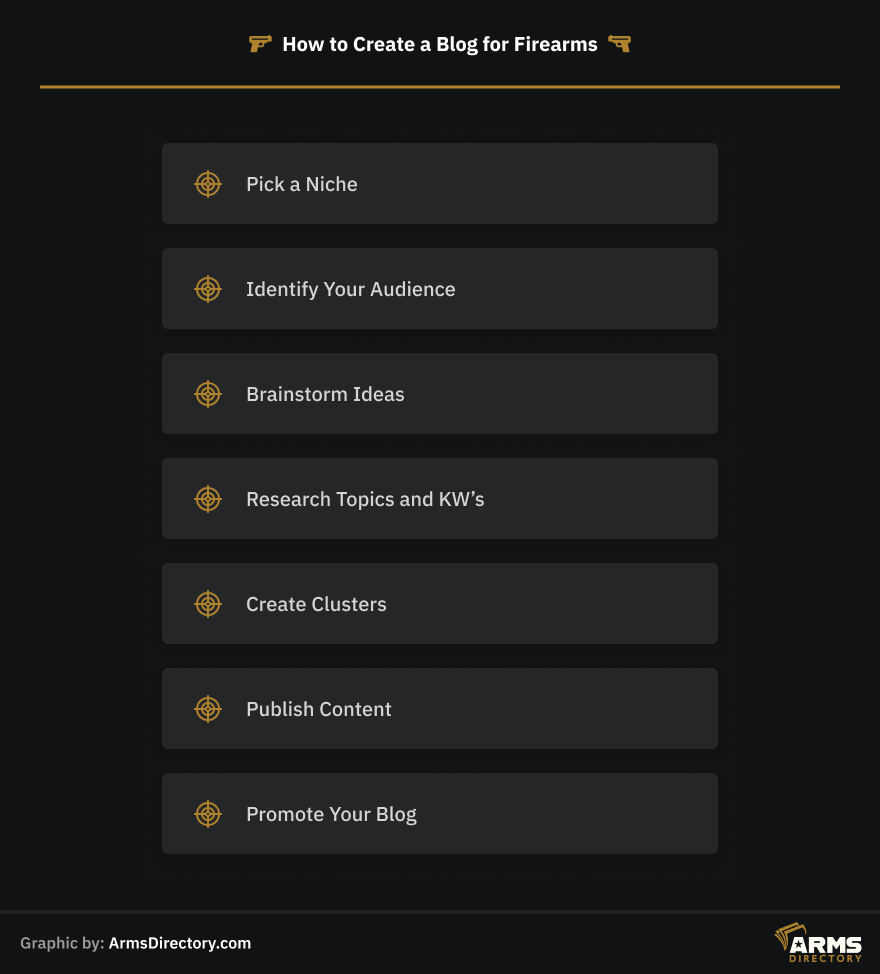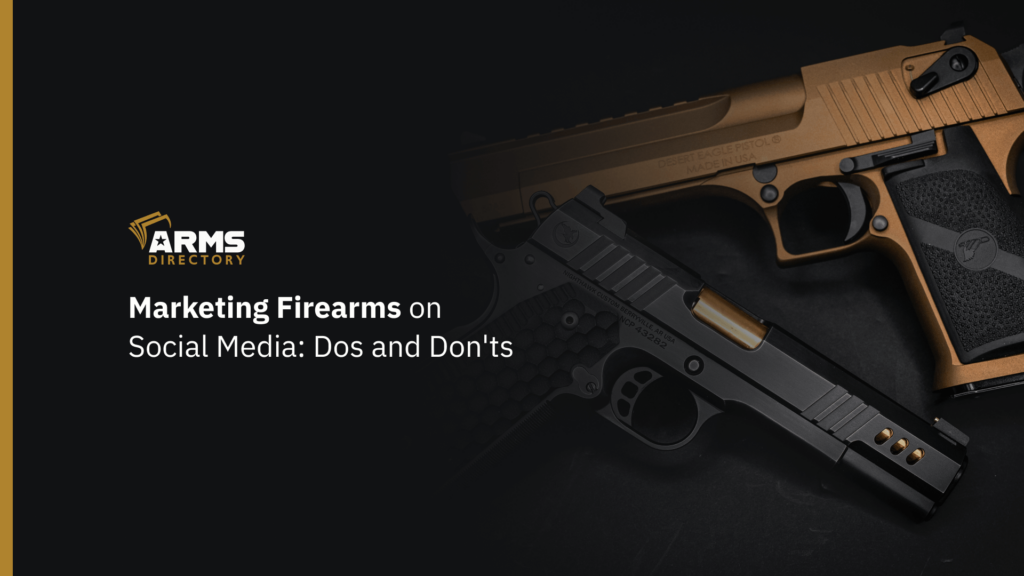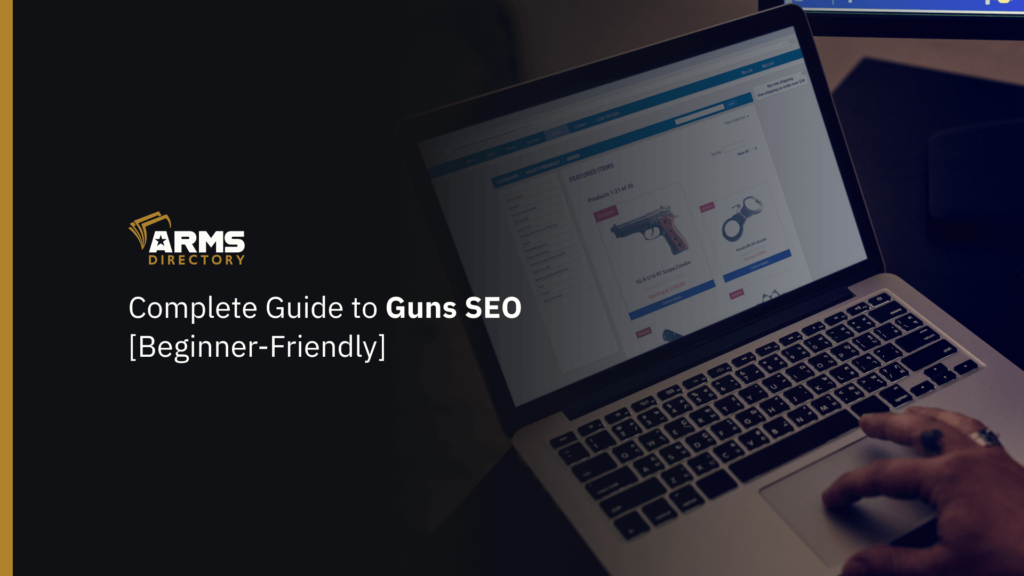
How to Create a Killer Firearms Blog
Running a blog is among the best ways to attract the interest of users, educate them, and make them more likely to trust you, therefore encouraging them to use your products or services.
But it’s not just about creating a blog, and waiting for people to come. There are some actionable steps you can take to make sure your blog lures in visitors and offers value at the same time.
Today, we will specifically be outlining what you can do to create a killer firearms blog.
Related Post: Complete Guide to SEO For Guns[Beginner-Friendly] – Arms Directory
How to Create a Blog for Firearms

- Pick a Niche
- Identify Your Audience
- Brainstorm Ideas
- Research Topics and KW’s
- Create Clusters
- Publish Content
- Promote Your Blog
1. Pick a Niche
In our scenario, the general niche is established – firearms. From here on, you can choose to either use the wide-ranging topic or narrow it down further. This largely depends on the type of business you are running.
For instance, if you are selling hunting weapons and accessories, you would probably prefer to write more about hunting, rather than self-defense.
The good news is that there is enough to write about in the various sub-topics, so you won’t exhaust yourself after writing five articles. Also, it’s not like you can never write about something other than hunting.
Once you have created a decent amount of content for the niche you have chosen, and earned some topical authority, respectively, you can start to expand your knowledge base by adding different pieces of information that are still relevant to your readers.
Just make sure you stay within the niche. It would be confusing to both readers and search engines if you started adding articles that are irrelevant to your niche, such as the lives of baby dolphins or how to make Italian gelato.
Related Post: Hunting Gear: Checklist, Gear, and All You Need to Know – Arms Directory
2. Identify Your Audience
A very important aspect you should consider for your blog is the main audience that your content is meant for. The people that you want to buy your products or services. This is necessary because, quite often when you are trying to sell to everyone, you sell to no one.
Keep in mind that identifying your target audience is not just about the interests of people. It also includes things, such as their age, gender, values, lifestyle, type of content they prefer, and so on.
Related Post: 6 Best SEO Practices in 2024 [Firearms Edition] – Arms Directory
3. Brainstorm Ideas
Now that you know who you are writing for, and what your niche is, it is time to gather your team together and do some serious brainstorming about your gun blog. Sit down with your entire team – you don’t need to be a marketer or a writer for this step of the process. Sometimes great suggestions can come from the people you least expect.
Don’t spend too much time on the task – 30 to 60 minutes maximum (per session) should be enough. The idea is to write down everything that comes to mind. You will have plenty of time to decide which ideas are good to use afterward.
Related Post: Ultimate Guide to Gun Marketing, and Selling Guns – Arms Directory
4. Research Topics and KW’s
Once you have a big pool of ideas, you can start researching to find which ones are worth writing about. If you are just starting out with your blog, it is a good idea to already have some initial articles on a few of the topics you have chosen beforehand – between 15 and 30 should be enough. You don’t want to start a blog with only one or two posts.
While you can research topics and key phrases on Google, do make sure to back up your research data throughout using the proper keyword tools like Semrush, Ahrefs, or Ubersuggest.
Also, do check out other blogs about guns to find out what your competitors are writing about. You can get inspiration from them, or find out what they are missing out on, and provide that information on your blog.
Related Post: Essential Listening: Best Gun Podcasts to Follow in 2024 – Arms Directory
5. Create Clusters
Topic clusters, a.k.a., content clusters, are a great way of gathering systematic information about guns and presenting comprehensively written topics to your readers. Clusters are also a good way to do internal linking between your articles and demonstrate your expertise to search engines and people alike.
One example of how to do a content cluster is: to start with the main page, also known as the pillar page. Let’s say that page is “Deer Hunting Guide”. In said page, you try to include everything about the topic, but without going into too much detail.
From there, you start creating your sub-pages, or hub pages. These could include articles, like:
- Best Weapons for Hunting Deer
- Essential Deer Hunting Accessories
- Deer Hunting Clothes
- Best Time to Hunt Deer
- Deer Stalking Tips
The goal, as aforementioned, is to completely exhaust the subject, and become a go-to resource for the topic in question.
Related Post: Seeing in the Dark: The Role of Headlamps for Hunting – Arms Directory
6. Publish Content
When publishing content on your blog, there are certain guidelines you should follow:
- Meta descriptions. Every page you publish should have a unique meta description that contains the focus keyword of that page, and more often than not a call to action that encourages readers to click on your page.
- Image alt tags. These are the words that appear instead of a picture when the image doesn’t load. They also provide more context to search engines, so that they are able to better crawl and rank your website. Don’t skip these tags. Besides, they only take a minute to do.
- Readability. Always make sure that your content is easy to skim through. Break your text into short paragraphs, and whenever possible, try to avoid ultra-long sentences that are hard to follow.
- URLs. URLs should be short and to the point, containing only the feature keyword. That’s the most important thing you should remember. Always go for www.website.com/deer-hunting , instead of www.website.com/deer-hunting-complete-guide-for-beginners-2024
By adhering to these guidelines, you can be sure that you are following the best practices for your content, which will increase your chances of getting featured high in search engine results pages.
Related Post: American Classics: The Marlin 1895 Trapper Explored – Arms Directory
7. Promote Your Blog
Last but not least, you should promote your blog, especially when it is still in the early stages of development. There are many ways to draw attention to your blog.
You could turn your posts into YouTube videos, start a podcast, begin a simple newsletter to share company updates, along with articles from your blog, create stunning visuals, reply to user comments…
All of these actions can persuade more people to visit your site. The best part is that none of them requires too much effort.
A video, for example, can be shot with just your smartphone, and only be a few minutes long. Of course, with time, you may want to start making longer videos, which will require better and more expensive equipment.
Similarly, starting a newsletter doesn’t have to be a painstaking process – include some info on what you are working on, throw in a customer review or better yet a case study, and share your latest article. Again, as time progresses, you will refine your skills, and make your newsletter more compelling.
Related Post: Outrageous Gun Myths That Really Need To Die – Arms Directory
Final Words
That’s it for today. Hopefully, you have learned a lot from our article about how to create a well-structured firearms blog that can grow your business, and reach as many of your target audience, as possible.
Don’t forget to check our own blog to learn more about digital marketing within the gun industry, as well as, the latest updates, trends, and everything interesting in the gun world.



![The Ultimate Shooting Accessories for Every Weapon [A 2023 Beginners Guide]](https://vault.armsdirectory.com/wp-content/uploads/2023/08/30071223/The-Ultimate-Shooting-Accessories-for-Every-Weapon-A-2023-Beginners-Guide-1024x576.png)


![6 Best SEO Practices in 2024 [Firearms Edition]](https://vault.armsdirectory.com/wp-content/uploads/2024/05/02005451/6-Best-SEO-Practices-in-2024-Firearms-Edition-1024x576.png)